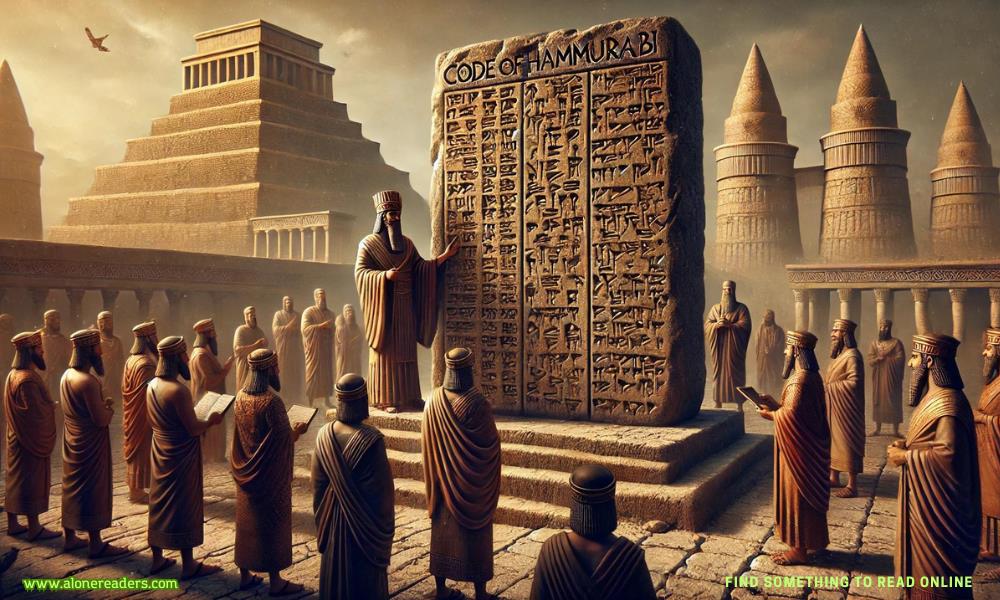
The Code of Hammurabi is one of the earliest and most comprehensive written legal codes in history, originating in ancient Mesopotamia. Created around 1754 BCE by King Hammurabi, the sixth king of the First Babylonian Dynasty, this collection of 282 laws reflects the complexities of early civilization and offers insight into how justice, social order, and governance were maintained in one of the world’s first urban cultures. The Code was inscribed on a large stone stele and various clay tablets, providing a public record of the laws that governed daily life in Babylon and surrounding regions.
Hammurabi’s laws were revolutionary in the way they formalized legal processes and structured society. They covered a wide range of topics, from trade and business to family relationships, property rights, and criminal behavior. What made the Code distinctive was its detailed categorization of offenses and the corresponding punishments, often with the principle of retribution, "an eye for an eye." The laws were designed to promote fairness and equality under the law, although the severity of punishments often depended on one's social status. For instance, the penalties for crimes committed against the upper class were generally harsher than those for crimes against lower-class individuals.
One of the key aspects of the Code of Hammurabi was its concern with justice and the king’s role as the protector of his people. Hammurabi viewed himself as a divinely appointed leader, entrusted with the welfare of his subjects. The Code thus not only functioned as a set of laws but also as a means of demonstrating Hammurabi’s role as a just ruler who aimed to preserve harmony and justice within his kingdom. He emphasized the idea that the strong should not oppress the weak, a principle that was quite advanced for its time. This vision of kingship as a guardian of social order was central to the administration of justice in ancient Mesopotamia.
The Code also reflects the importance of agriculture and trade in Babylonian society. Laws regulating contracts, transactions, and property rights ensured that commerce could flourish while disputes could be settled fairly. The enforcement of contracts was crucial, with clear provisions for compensation and restitution in cases of fraud or theft. Moreover, the laws were designed to protect consumers and regulate the conduct of merchants, ensuring that goods and services were exchanged according to agreed-upon terms.
Another important facet of the Code of Hammurabi is its focus on family structure and the roles of men and women within society. The laws recognized the hierarchical nature of Mesopotamian society, where men typically held more power and authority than women, though women did have certain legal rights. For example, women could own property, initiate divorce, and engage in business activities. The Code also detailed the obligations of husbands, wives, and children within the family unit, including issues of inheritance, marriage, and child custody. In many ways, these laws reinforced the patriarchal structure of Mesopotamian society, but they also provided a framework for managing family disputes and securing the rights of individuals within the household.
In terms of criminal law, the Code of Hammurabi is best known for its retributive justice, particularly the principle of lex talionis, or "law of retaliation." This approach dictated that the punishment should fit the crime, often quite literally. For example, if a person caused physical harm to another, they could expect a similar injury to be inflicted upon them. However, the application of this principle was not uniform; punishments often varied according to the social status of the victim and the perpetrator. Wealthier individuals or those of higher status might receive more lenient sentences, while lower-class individuals faced harsher consequences. Despite its inherent inequalities, the Code sought to create a structured system of justice that was relatively predictable and consistent in its application.
One of the most significant aspects of the Code of Hammurabi is its legacy. Although the Code is thousands of years old, many of its legal principles resonate with modern legal systems. Concepts such as presumption of innocence, contracts, restitution for damages, and proportional punishment are all fundamental to contemporary law. Hammurabi’s attempt to document and codify the laws that governed his society laid the groundwork for the development of more sophisticated legal systems throughout history. The stele bearing the Code of Hammurabi was rediscovered in 1901 by French archaeologists, and its impact on the study of ancient law has been profound, offering scholars valuable insights into the legal traditions of the ancient world.
In conclusion, the Code of Hammurabi stands as a monumental achievement in the history of law. It represents one of the earliest attempts to systematically codify legal principles and ensure justice across a diverse and complex society. While some aspects of the Code, particularly its retributive justice and social hierarchies, may seem harsh by modern standards, it was a groundbreaking legal document that shaped the governance of ancient Mesopotamia and influenced subsequent legal traditions. Hammurabi’s legacy as a lawgiver endures, and his Code remains a critical subject of study for anyone interested in the origins of legal systems and the evolution of justice in human civilization.